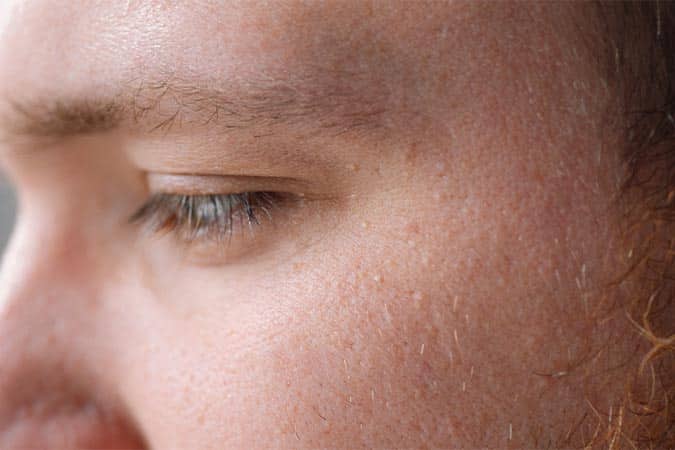What are Milia?
Milia are small, white bumps that often appear on the cheeks, lips, eyelids, and nose. They occur when keratin, a protein that is found in skin tissues, hair, and nail cells, is trapped under the skin. Milia can occur in males and females of all ages, however, they are most common in newborns. While milia are not usually itchy or painful, they may cause discomfort for some people, as rough clothing can cause milia to become red and irritated.
The cause of milia in newborns is unknown. However, in older children and adults, milia are usually associated with some sort of damage to the skin, including:
- Blistering due to a skin condition
- Blistering injuries such as poison ivy
- Burns
- Sun damage
- Long-term use of steroid creams
- Skin resurfacing procedures
It is important that you do not try to remove milia at home. Picking the milia can cause them to bleed, scab, and scar, and can also result in infection. Contact one of our dermatology providers to ensure a safe removal process.
Who is a Good Candidate for Milia Removal?
Individuals who have milia that do not go away or cause them discomfort can benefit from milia removal. Those with active skin infections in the treatment area(s) should wait until it clears up before undergoing treatment. Overall, the best way to determine if this treatment is a good option for you is through an assessment by one of our dermatologists.
What to Expect During Milia Removal?
In most children and adults, milia will go away within a few months. However, if these cysts cause cosmetic concern or discomfort, there are treatments that can eliminate them, including:
- Deroofing: A sterilized needle is used to pick out the contents of the milia.
- Topical Retinoids: These creams containing vitamin-A help to exfoliate the skin.
- Chemical Peels: These peels cause the first layer of skin to peel away, revealing new skin.
- Destruction Curettage: The cysts are surgically scraped and cauterized.
Milia
Are Milia contagious?
Are Whiteheads and Milia the same?
Can a dermatologist remove milia?
Can I remove milia at home?
Can Milia be permanent?
Recovery from Milia Removal
There is no downtime required following milia removal, so patients can return to their everyday routine as soon as they feel comfortable. Your dermatologist will inform you on how to properly care for your treatment site(s) following milia removal to ensure optimal results. Do not hesitate to contact our office following treatment if you have any questions regarding healing.
Schedule a Consultation
If you are interested in learning more about milia removal at HMGS Dermatology, contact our office today to schedule your initial consultation with one of our dermatology specialists.

Get Started With A Visit!
Fill out the form below and we will reach out to you shortly to schedule an appointment.